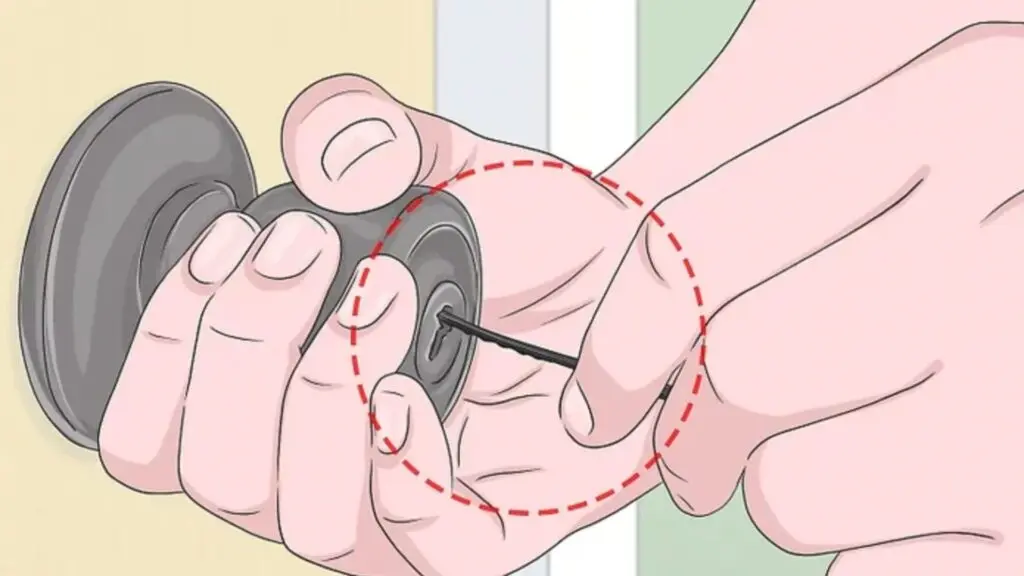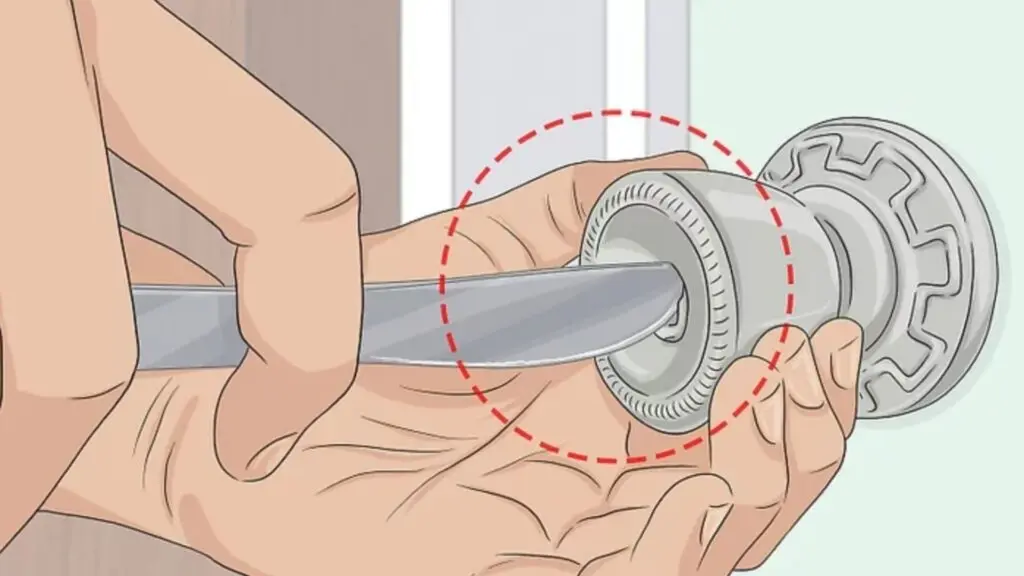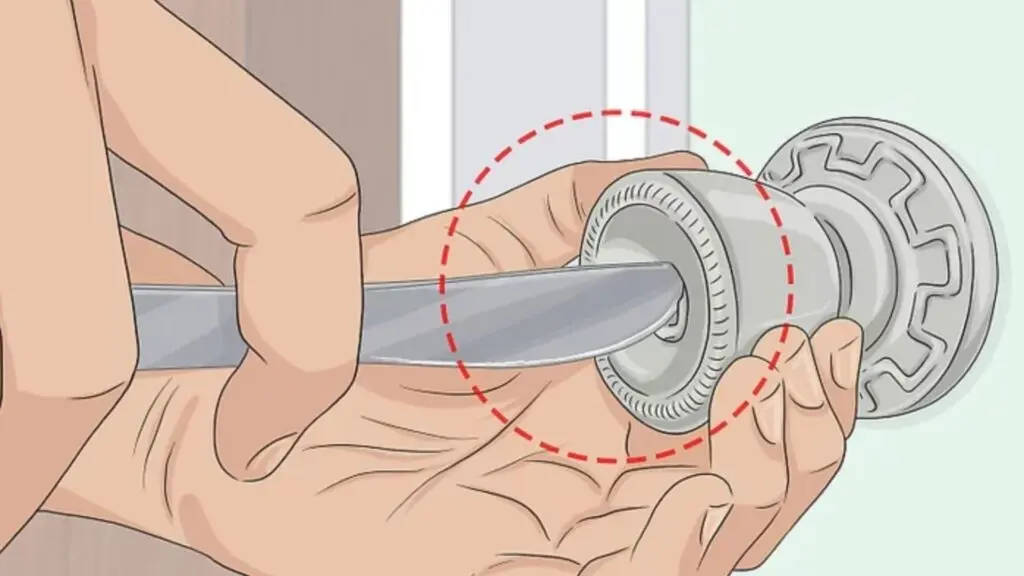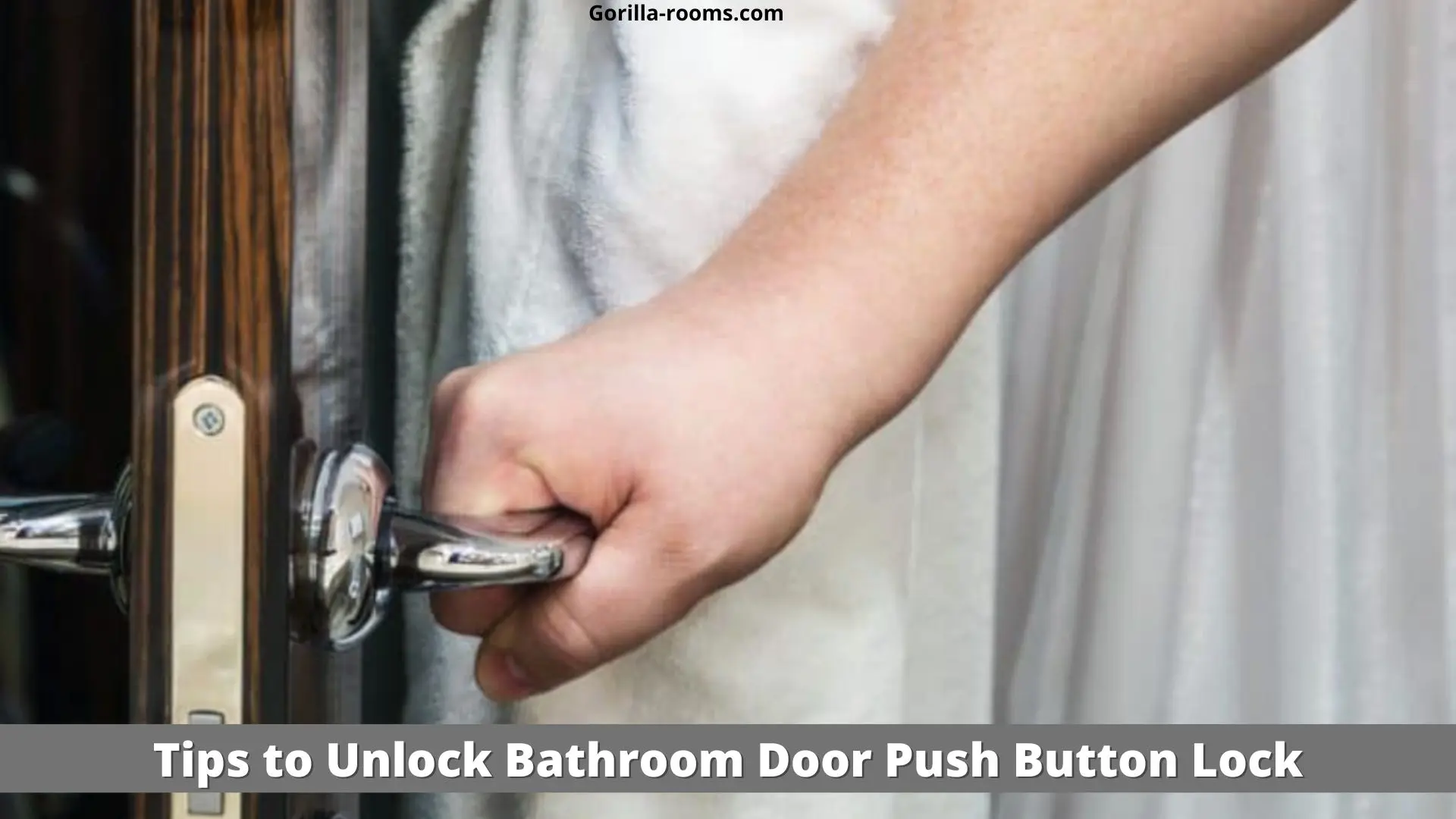Struggling to open a locked bathroom door can be a frustrating experience. Fortunately, most bathroom doors have privacy locks rather than security locks, making them relatively easy to access.
In the case of an emergency, you can call a locksmith or the fire department. They will be able to unlock the door for you quickly.
On the other hand, learning how to unlock a closed bathroom door on your own can save you time and money in the long run as well. If you have the correct tools and assistance, you don’t need to be an expert to open a locked door.
So, if you’re looking for instructions on how to unlock a bathroom door push-button lock. In this article we will share 13 tips to unlock bathroom door push lock.
Types of Privacy Locks
Before learning the steps of unlocking bathroom doors, it is essential to know which sort of privacy lock is used on bathroom doors in the United States.
1- Privacy Push-Button Lock
Generally speaking, this is the most popular type of lock used in the bathrooms. Because the lock is positioned in the bathroom with a push-button system, it is more convenient to use.
The person inside closes the door and presses the doorknob’s button. The lock was then activated by pressing the button. You have to turn a knob inside when you want to unlock it.
2- Turn Button Privacy Lock
Turn-button locks are not commonly found in home bathrooms. The interior doorknob or handle knob is used to operate this type of lock.
3- Bolt Lock with Lever
It is a relatively modern design that resembles a deadbolt. It has the benefit of not requiring a key from the outside.
How Do You Unlock a Bathroom Door With a Push Button Lock?

Push-button locks are characterized by a small, circular hole in the middle of the knob on the outside of the door. Here are a few quick and easy ways to open this type of lock without a key. We guarantee you that you will be able to resolve this issue as soon as possible.
1- Use A Lock-Picking Kit
A lock-picking set is probably the safest and fastest technique to unlock a locked bathroom door. If you have a bathroom door with a faulty lock, a lock-picking set is an excellent investment.
Follow the instructions on the lock-picking kit to select the optimum tip to unlock the door.
2- Credit Card
Although a credit card won’t unlock a deadbolt, you can use this method to readily open spring locks, latch bolts, and doorknobs with a lever.
Bear in mind that you must select the appropriate card. The ideal option is a laminated, strong, and flexible card, like a library card. The most acceptable option is a loyalty card because it is easier to replace than a credit card or an ID card.
The card is inserted above the door lock by sliding it between the frame and the door. Slide it by tilting it towards the knob and bending it. Next, you’ll need to put your weight down on the door while wriggling the card back and forth until the door unlocks.
3- Use of a Substitute Key
An extra key is unquestionably beneficial when unlocking any door in your home. If you don’t have a spare key, you can use the other available methods with readily available equipment to get out of this scenario.
i- Eyeglass Screwdriver

If your door has a privacy handle, you can remove it with a screwdriver in an emergency. Remember not to turn the lock while attempting to unlock it.
Push a flat-head screwdriver for eyeglasses into the hole on your doorknob as far as possible. It is important to remember that any tool with thicker rods will not operate since it cannot fit into the handle.
It’s best to turn and wriggle your object until you feel a groove in it. You’ll hear a clicking sound after the door lock is unlocked successfully.
ii- Paper Clip
The use of a strong paper clip to unlock a toilet door is one of the most effective methods. You can reshape the clip to meet your needs. If you have two paper clips, the method is considerably more manageable.
Bend the first clip and fold out your second one to make it straight. Use the straight tool below after inserting the bent pin into your lock hole. Now, it’s time to move and wiggle this second tool until the lock opens.
Remember: Avoid using paper clips that are too small. These are prone to breaking inside the lock since they are so thin and weak. If this occurs, you will very certainly require the assistance of a professional locksmith.
iii- Tension Wrench and a Paper Clip
The best way to create tension within a lock is to use a tension wrench, a minor hex key found at any home improvement or hardware shop.
It would be best to begin by inserting the wrench into the bottom of the lock and turning it to tighten it. You’ll hear a click as soon as you wiggle the paperclip within the lock at the top, and then the door will open.
4- Lock Picking
Many homeowners find lock picking difficult, mainly when there are no written instructions to follow. Insert the shorter end of an Allen wrench into the keyhole’s lower edge. Continue to apply pressure to the lock while turning it gently.
There are two main steps to follow to complete the task successfully.
i- Pin by Pin Method
Gently slide the paper clip forward while maintaining pressure on the Allen wrench. When you’ve got the hook in place, grab the bend of the pun and lift it upwards. If the lock is successfully unlocked, you will hear a click sound.
ii- Scrubbing
Gently press the Allen wrench into the keyhole and lift it upwards to make a circular motion.
5- Use a Knife

Using a knife is another method of picking a bathroom door lock. This method resembles the card method in many ways.
To open the door, slip the knife between the door and the jamb, leaning against the door while you do so. It can take a few tries, or you might have to slide up.
Remember that a sharp knife might cause damage if used incorrectly. Use a non-sharp object like a butter knife or spreader.
6- Metallic Coat Hanger
Using a metal coat hanger to pull the latch bolt is great to open a closed bathroom door. It is essential to bend your hanger sufficiently to create a long handle with a hook at the end.
Using this hook, attach it to the latch bolt of your door by securing it to the wall. Use your other hand to rotate knobs while pulling the hanger in the desired direction.
Keep in mind that this strategy only makes sense if you don’t have the jamb blocking the gap between the wall and the door.
7- Bobby Pin
Bobby pins are probably the most effective lock-opening device. They are simple to find and can be shaped into the desired shape. However, be aware that this process will take some time.
Straighten and flatten the bobby pin as much as possible to remove the curved edges. Make sure the pin is inserted into the keyhole before turning the knob. Following this procedure creates great chances of unlocking the push button door lock.
8- Use of Cord
You can use a cord with a slipknot or a solid rope to open a locked door without causing any damage. If you had a little window at the top of your door, you could efficiently perform this task.
Choosing a long enough cord to reach the outside lock would be best. Use the cable to hold the lock and pull it on both sides to open the door.
9- Door Kicking
Combining a hard kick and Newton’s third law is ideal if you are confident in your physical strength and there are no tools available.
Your bathroom door must open outwards and be constructed of a somewhat fragile material for this to function.
This procedure is not complicated at all. By using your dominant leg, kick a weak place above the doorknob. Perform this action with a flat foot and try again if you fail the first time.
10- Remove the Hinges
Although it is a bit aggressive, it’s a very effective strategy. To wedge it between the pin and the bottom knuckle of your door, you’ll need a flat-head screwdriver.
Push the screwdriver down with a hammer until the pin and head are sufficiently dislodged. After doing this procedure on all hinges, you can remove the door successfully.
You should use this method only after trying the other methods mentioned above because it takes the longest time.
11- Remove the Door Knob

Remove the doorknob if you still can’t unlock the door with the items above. In most cases, two visible screws hold the doorknob to the doorknob body. These can be undone using a screwdriver.
Insert the screwdriver into the lock and gently twist it to free the screws from the handle to release the lock. By tugging on the loose screws, you may need to add some pressure to the knob.
Sometimes, crews can be concealed beneath a stylish collar. If this is the case, push the collar off with a flat-head screwdriver or use a clip to pry it open.
12- Drill
Keep in mind that drilling the lock will harm your door, so be careful and only use this procedure if you have no other option. The purpose of the drill is to remove the pins from the lock and turn it.
Consider the sheer line (the top of the keyhole) when drilling. The lock component is located on the other side of the pin-cylinder interface. Start with a tiny drill bit and always keep the lock lubricated. To open the lock, use a screwdriver after drilling a hole.
13- Breaking the Lock with Hammer
It is, without a doubt, the absolute final option. As a last resort, this procedure should only be used in the case of a severe emergency and when none of the other options listed above are functional.
To remove the lock, use a heavy tool such as a hammer. If you’re powerful enough, continually strike a doorknob until the lock disintegrates and falls off the door.
Use extreme caution while trying to unlock a locked bathroom door with a hammer because it can cause damage to the door.
Conclusion
In conclusion, learning to unlock a bathroom door with a push-button lock is not a complicated process. After learning how to do this, it will no longer be an issue.
This guide article provides various effective tips to unlock the bathroom door conveniently. To avoid the expense of calling a locksmith, use these methods to open a bathroom door lock.
We hope you found this article interesting and informative. Please leave any other suggestions or queries in the comments section below if you have any other suggestions or queries.
Thank you for reading!

